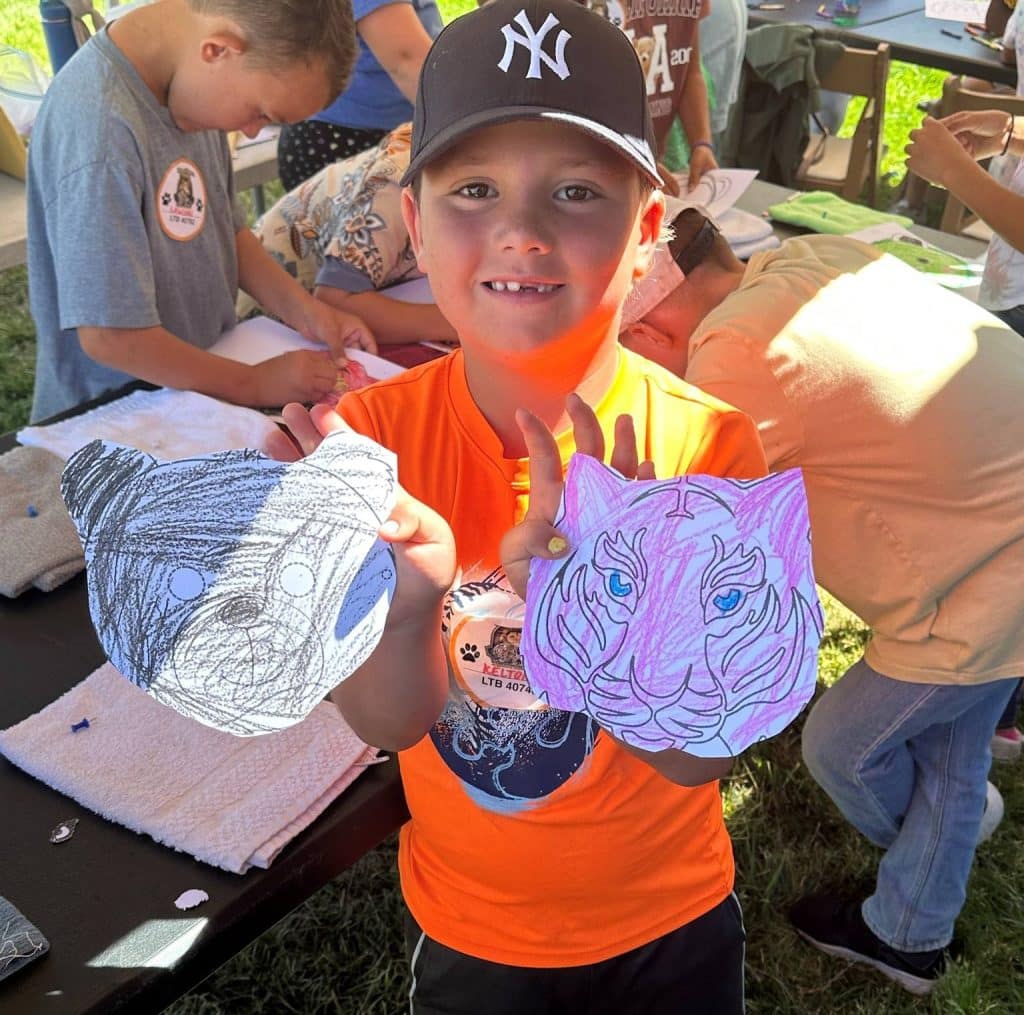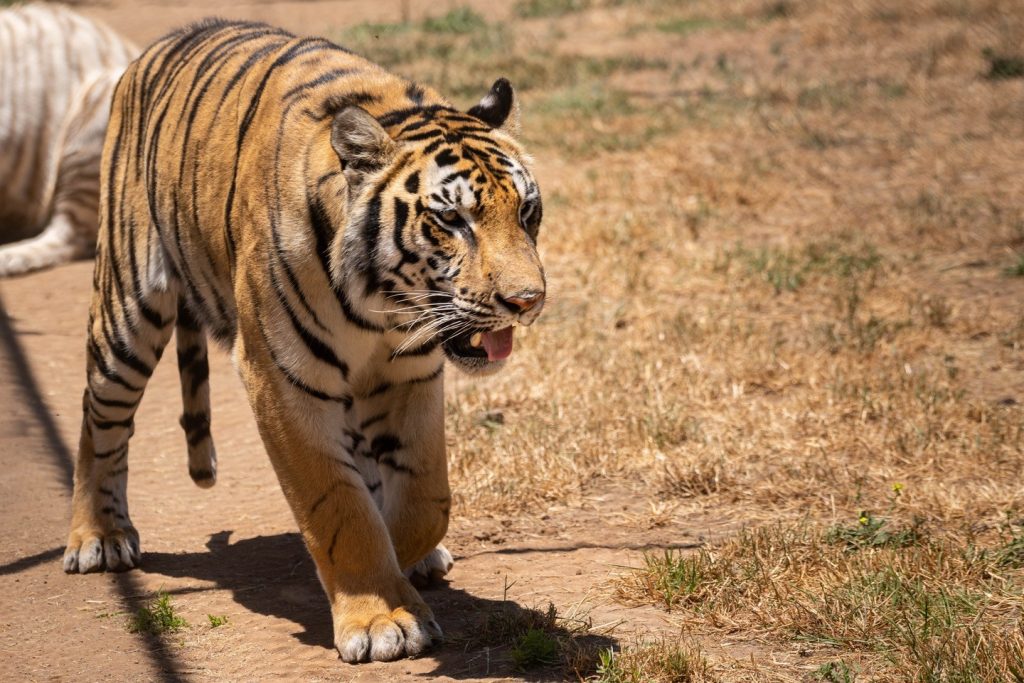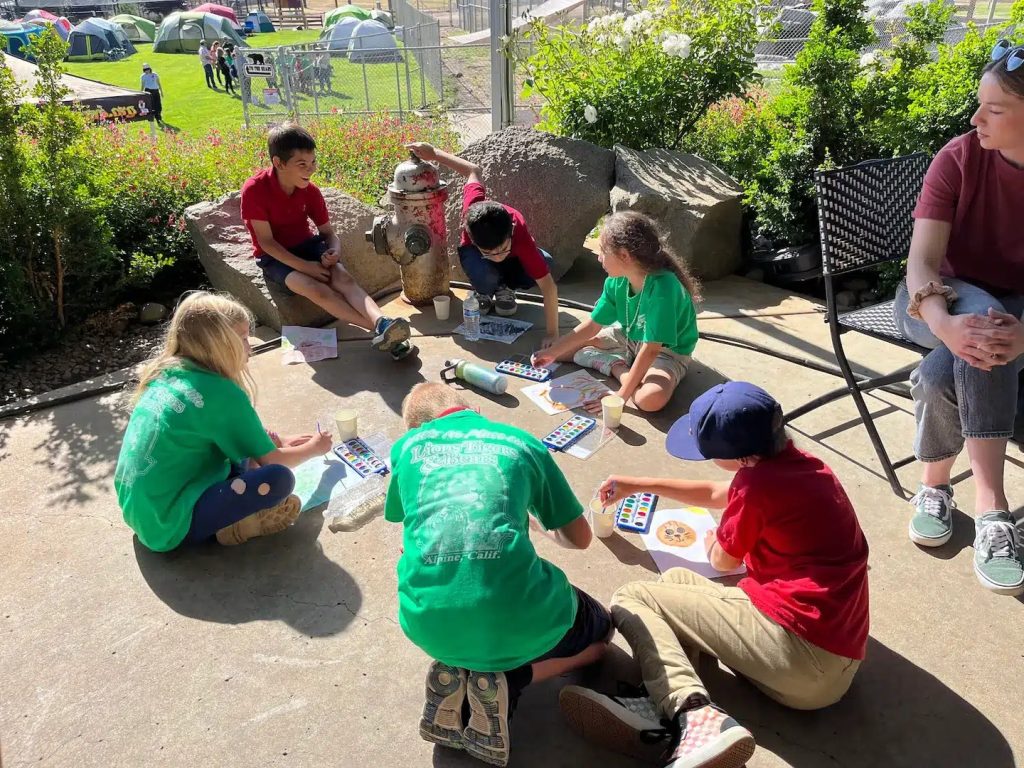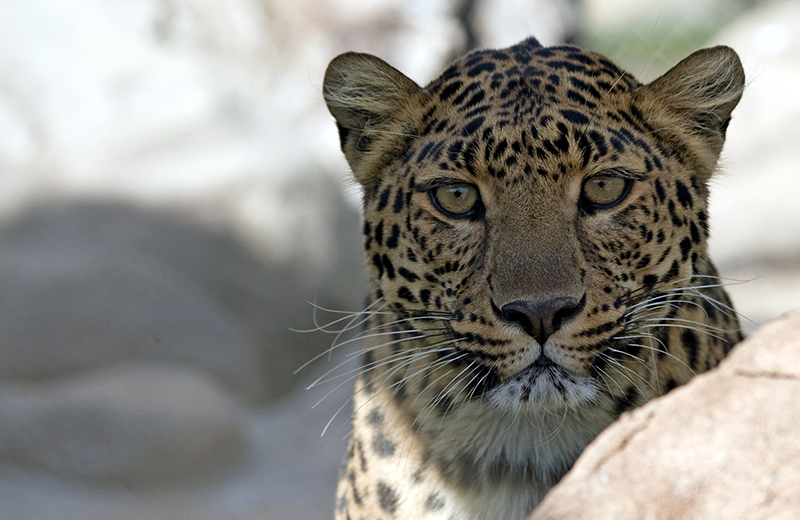

Exotic animals like tigers, leopards, and bears roam wild in forests and mountains. But not all of them get to live safely in their natural homes. Some lose their habitats to deforestation, while others are taken from the wild and kept as pets or used for entertainment. Many end up in terrible conditions, stuck in small cages, or even killed and sold for body parts.
For example, some tigers are bred in captivity and sold to roadside zoos or private owners, where they live in cramped enclosures without proper care. Bears are often forced to perform in shows or kept as pets by people who don’t understand their needs. Leopards, like Conga, a rescued leopard at Lions Tigers & Bears, are sometimes taken from the wild and kept in private homes, only to be abandoned when they grow too big to handle.
Unfortunately, human actions are putting many exotic animals at risk. Cutting down forests, taking animals from the wild, and keeping them in unsafe places all add to the problem. Some species are even in danger of disappearing forever.
Tigers are one example. There used to be thousands across Asia, but fewer than 4,000 remain in the wild. Leopards are also in trouble. Some, like the Amur leopard, are critically endangered, with fewer than 120 left in Russia and North China. Bears face problems, too. The sun bear, the smallest bear in the world, has lost over 30% of its population in just a few decades. Many are taken from the wild and kept in small cages for their whole lives.
If nothing changes, more and more of these animals will be lost. But there is hope. Accredited sanctuaries like Lions Tigers and Bears are working to protect them, and our children can help. Even small actions can make a big difference.
If we want to protect exotic animals for the future, we have to start with the new generation. When children learn about wildlife and the challenges these animals face—habitat loss, illegal trafficking, and the consequences of captivity—they grow up with a deeper understanding and empathy for the natural world.
This connection is crucial because the more people care, the greater the chance these animals have to survive and thrive. By inspiring the next generation to value wildlife, we’re not just teaching them about animals; we’re empowering them to become stewards of the planet.
Think about it. A kid who visits an animal rescue center and hears about a rescued tiger is way more likely to grow up wanting to help wildlife than someone who never learns about these issues. Education turns kids into future advocates. They start making better choices, speaking up for animals, and inspiring others to do the same.
It’s not just about learning facts—it’s about building a connection. When kids see a rescued bear up close or hear the story of a jaguar saved from a terrible situation, it sticks with them. They realize these aren’t just “cool” animals but living beings that deserve respect and protection.

The best part? Kids don’t have to wait until they’re older to make a difference. They can start helping right now by learning, sharing what they know, and making small changes in their everyday lives. That’s how real change begins.
Kids don’t have to do something huge to help exotic animals. Even small actions can add up and make a real difference. As a guardian, you have the chance to guide them in the right direction—helping them learn, take action, and feel empowered to protect wildlife.
One of the simplest ways for kids to help is by sharing what they learn. The more people know about wildlife rescue, the more support these animals get.
Suggest a visit to an accredited animal sanctuaries like LTB as one of their school field trip ideas. It’s a fun and powerful learning experience for children, and their teachers. Seeing these animals up close and hearing their rescue stories helps kids understand why wildlife conservation and rescue matters.

Keeping the environment clean helps protect animals, too. A simple habit like recycling or using less plastic can prevent pollution that harms wildlife.
Teach kids to advocate for animals. Many exotic animals suffer simply because people don’t know any better. But when kids learn about animal rights activism, they can help educate others.
A school field trip to an accredited animal sanctuary is one of the best ways for kids to learn about exotic animals. LTB offers a hands-on experience that teaches kids about rescued animals and how to protect them.
Each animal at the sanctuary has a story. Some were saved from roadside zoos, private ownership, or illegal breeding operations. Learning about their past during a school field trip can help kids understand why wild animals don’t belong in captivity. It also teaches them ethical responsibility—helping them see how their choices can protect animals.
The sanctuary provides an activities card with interesting facts and activities to make learning fun during the field trip. These cards keep kids engaged while teaching them about different species, rescue and conservation efforts, and how they can help.
Kids get to spend time with animals and see them up close, safely, and ethically. Watching a rescued bear explore its habitat or a tiger relax in the sun helps children connect with wildlife in a way they won’t forget. Each animal has its own personality, and seeing them live freely teaches kids why they deserve protection.
One of the highlights of visiting LTB is having a picnic with Conga, a beautiful leopard who now lives safely at the sanctuary. Sitting nearby and watching her move through her habitat creates a unique and unforgettable lunch experience they won't soon forget!

At the end of the field trip, kids can participate in interactive activities and earn prizes. These small rewards help reinforce what they’ve learned and encourages them to continue caring about wildlife long after the trip is over.
Not every place that houses exotic animals is safe for them. Some places claim to be sanctuaries but mistreat animals or use them for profit. Supporting true accredited animal sanctuaries helps ensure that rescued animals receive the care they need.
Lions Tigers & Bears is one of these ethical sanctuaries. We do not allow direct contact with animals, breed them for profit, or force them to perform. Instead, our sanctuary provides large, natural habitats, medical care, and a peaceful home for animals rescued from unsafe conditions.When families visit, donate, or volunteer with animals at real sanctuaries, they help fund food, veterinary care, and rescue efforts for more animals in need. Supporting the right places is one of the most important ways to help abused animals and make a difference in wildlife rescue and conservation.

Ph: 619.659.8078
Fx: 619.659.8841
[email protected]
24402 Martin Way, Alpine, CA 91901